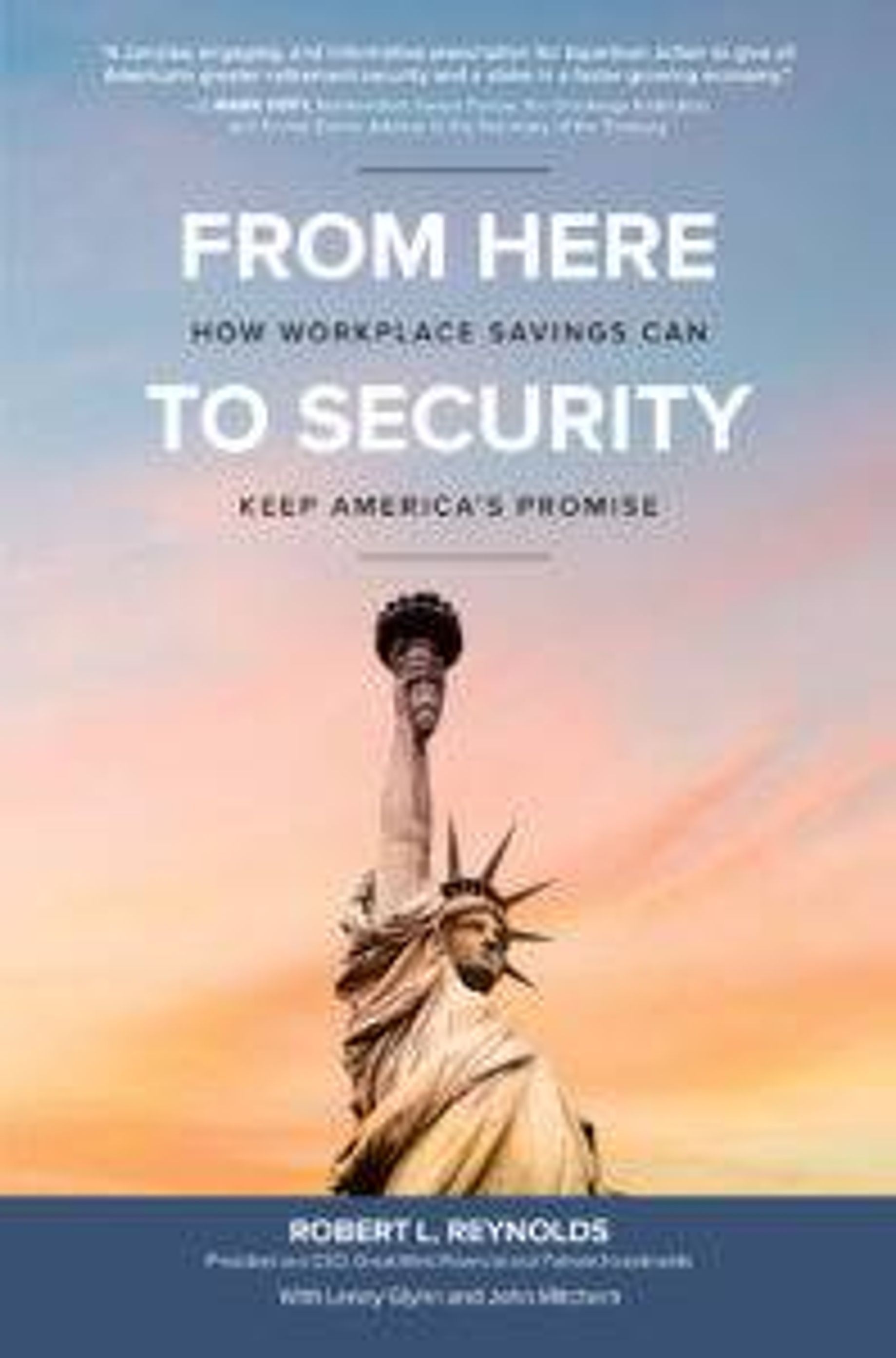Making America's Workplace Savings Plans Work Better
The 'From Here to Security' author's Workplace Savings 4.0 proposals
(The following is adapted from From Here to Security: How Workplace Savings Can Keep America's Promise, published by McGraw-Hill.)

Boomers approaching retirement are participating in the late stages of a 40-year financial experiment: the first generation to finance retirement with assets accumulated in “defined contribution” workplace savings plans like 401(k)s, 403(b)s and Individual Retirement Accounts (IRAs). These plans have evolved over the decades, adding features, improved risk management, better tools for decision-making and lower cost. They’re about to get exponentially better. But if Workforce Savings 4.0 ideas are put into effect, workplace savings plans will work even better for Americans.
The Birth of 401(k)s
I was present at the creation of 401(k)s, working as an executive at NCNB and Fidelity Investments when they came onto the scene in the early 1980s. In those days, they were known as “supplementary savings programs” or, amazingly, “salary reduction programs” — meant to augment or top off traditional pensions. Back then, workers faced a wide range of investment options and minimal guidance. They had to decide whether to enroll in the plans, how much to save and where to invest.
As a result, many workers didn’t participate, and those who did often ended up with high risk exposures or low returns caused by extreme risk aversion and an over-weighted allocation to “safe” money market funds.
Workplace Savings 2.0
In the 90s and after the turn of the century, we witnessed the rise of “Workplace Savings 2.0” — when plan sponsors and advisers began to apply the lessons of behavioral finance, experimenting with the automatic enrollment of workers, automatic escalation of the amount of savings workers put in and allocation to balanced investments. This period coincided with the development of target date funds, which allocate the investments of younger workers in high risk/high return equities, gradually shifting to fixed income exposures as they approach retirement.
Workplace Savings 3.0
About 10 years ago, Congress passed the Pension Protection Act, the most consequential retirement legislation in a quarter century, giving regulatory blessing to these innovations and legal protections for plan sponsors, leading to their widespread adoption across America. The result has been remarkable. In the Workplace Savings 3.0 era of today, American workers who are automatically enrolled and investing around 10 percent of their incomes in target-date-funds or managed accounts (particularly those working with financial advisers) are on track to replace all of their working income in retirement.
Only a minority of workers manage to achieve this, though there are tens of millions of them, so the challenge we face today is to spread the proven solutions that are working for them to all working Americans.

Workplace Savings 4.0
To complete that mission, we must ensure that as many American workers as possible gain access to on-the-job savings plans whose designs lead them to enroll, save 10 percent or more of their wages and invest in age-appropriate target-date funds, balanced funds or managed accounts. This is not an easy task when you consider that retirement savings competes with high health care premiums, runaway college tuition, high-cost housing and other expensive life necessities.
And Workplace Savings 4.0 must conquer some new territory. We need to expand these proven automatic features to include the conversion of accumulated assets into guaranteed incomes after retirement. For boomers facing decades in retirement, maintaining their lifestyles without running out of money will be no small challenge.
Finally, Workplace Savings 4.0 must be more inclusive.
We need to get more American workers into plans and make it easier for small businesses struggling with the administrative burdens of plans to band together in groups known as multiple employer plans. And we need to also embrace the millions of Americans working as contractors in our growing contingent labor force. The American workplace is changing and our workplace savings plans must evolve along with it.
We also need to provide larger — and refundable — Saver’s Credits, additional tax credits to employers who establish workplace retirement plans and credits to part-time, freelance and contract workers who establish IRAs. And we should allow retirees to make tax-free withdrawals from qualified retirement plans if they are used to cover health insurance or medical care.
Completing the Experiment's Promise
We’ve achieved remarkable things in our evolving system of Workplace Savings 1.0, 2.0 and 3.0 over the years. This system has demonstrated its capacity for innovation and it is robust; stress-tested by five recessions, two stock market corrections, a 35-year period of declining interest rates and a global financial crisis. Despite this buffeting, the plans have grown to comprise over $16 trillion in worker-owned retirement assets.
Workplace savings in America has indeed been something of an experiment — a demonstrably successful one — in large measure. Now is the time to complete its promise and include more American workers in what I believe can be considered the most successful wages-to-wealth mechanism ever seen.

